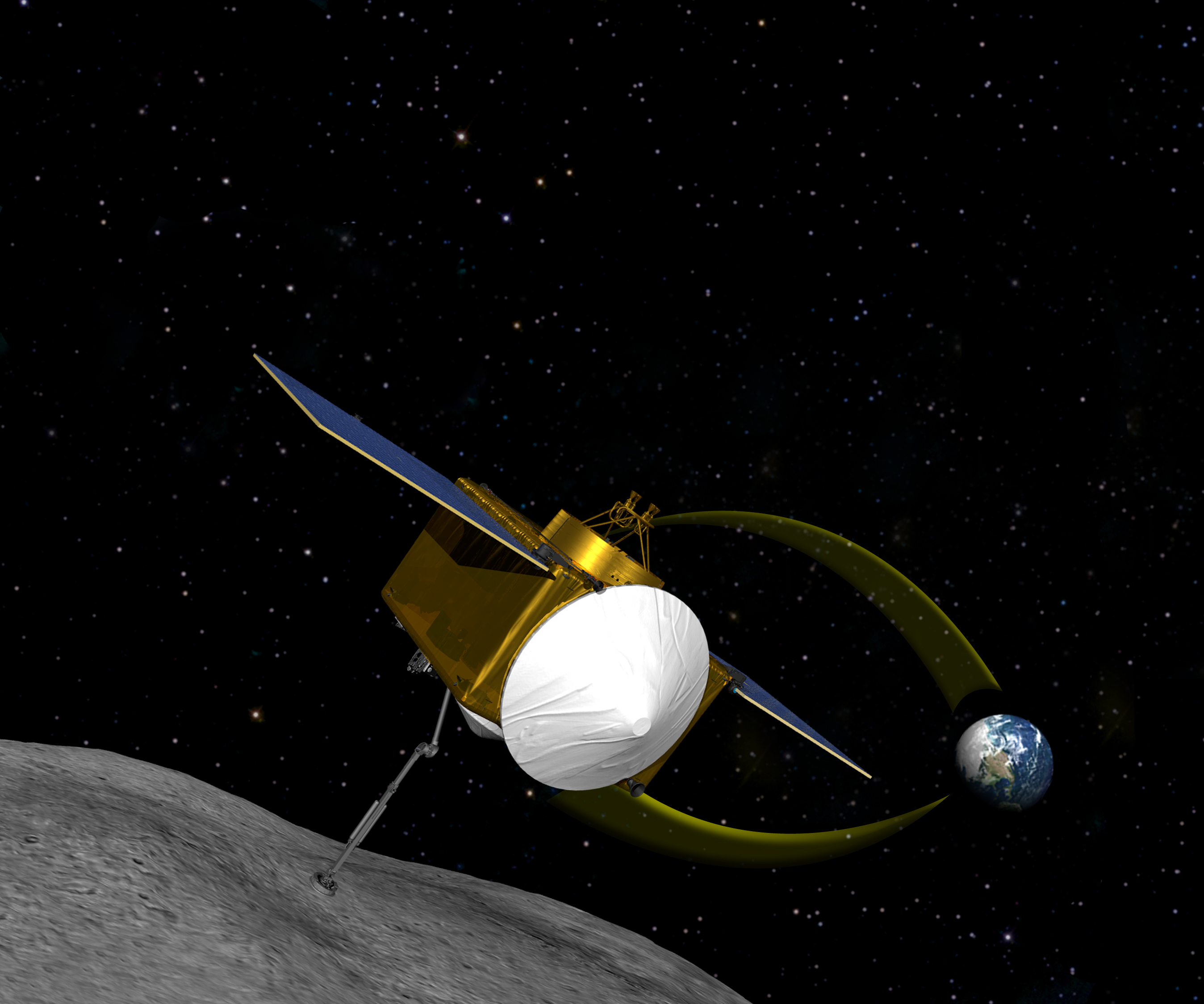
© NASAConceptual image of OSIRIS-REx.
On Tuesday, NASA announced that it had started the countdown for OSIRIS-REx, the space agency's mission to collect a physical sample from a distant asteroid.
"This is a pioneering effort, both technologically and scientifically," said Dante Lauretta, OSIRIS-Rex principal investigator from the University of Arizona. "Starting the countdown clock carries a lot of symbolism for us. After December 9, we will have a constant reminder of the time remaining to send OSIRIS-REx on his quest to return a sample of asteroid
Bennu."
Led by researchers at the University of Arizona, OSIRIS-REx is scheduled to visit the primitive, carbonaceous asteroid Bennu in 2018, collect a sample from its surface, and return it to Earth in 2023.
"999 days seems a long time to get the spacecraft on the pad, but we know that time will pass quickly. There is a lot of work to do before our spacecraft begins its journey, and we have to be very disciplined to get everything done in time," said Mike Donnelly, an OSIRIS-REx project manager at NASA's Goddard Space Flight Center in Greenbelt, Md.
NASA is allowing the world to follow the run-up to launch on the university team's website, on official Twitter feed and on Facebook.
"Osiris was formed from pieces scattered across ancient Egypt, where he awoke as the bringer of life and ruler of the underworld," Lauretta said. "Our spacecraft has a similar story - it will be consist of components fabricated in locations around the world, that once together, will allow us to connect with a near-Earth object that is an accessible remnant from the formation of our solar system."
NASA scientists said they expect the mission will help them address some basic questions about the nature of the very early solar system, the foundation of organic materials that made life feasible on Earth, and the orbits of asteroids that are potential threats to Earth. Using spectrometers, the OSIRIS-REx will be able to measure the intensity of light reflecting off Bennu at different frequencies and determine the asteroid's chemical make-up.
In addition to studying Bennu's composition, OSIRIS- REx will also be charged with the task of determining the effect of sunlight on Bennu's orbit.
Called the Yarkovsky effect, sunlight can push an asteroid's orbit when its surface absorbs sunlight, rotates and then radiates heat back out into space. These tiny pushes can significantly affect an asteroid's orbit over time - potentially sending it hurtling toward Earth.OSIRIS-REx also has a potential commercial purpose: collecting data for later use in space mining operations. Asteroids contain all kinds of useful minerals and precious metals and even the smallest asteroids could have resources worth millions of dollars. So called S-type asteroids are of particular commercial interest because they contain significant amounts of iron, nickel and cobalt.
Lauretta also noted that even though the spacecraft's mission is primarily scientific, it basically uses the same types of instruments that would be needed for a commercial mining operation.
"The only thing you might want to add is the ability to do a quick chemical analysis of material on board the spacecraft, so you can say, 'The platinum concentration is X,' for example," Lauretta said. "We couldn't afford it - that's a pretty sporty option. Other than that, for anyone who's thinking about an asteroid mission, this is the set of instruments that you want to fly."
Source: Brett Smith for redOrbit.com - Your Universe Online
Reader Comments
to our Newsletter